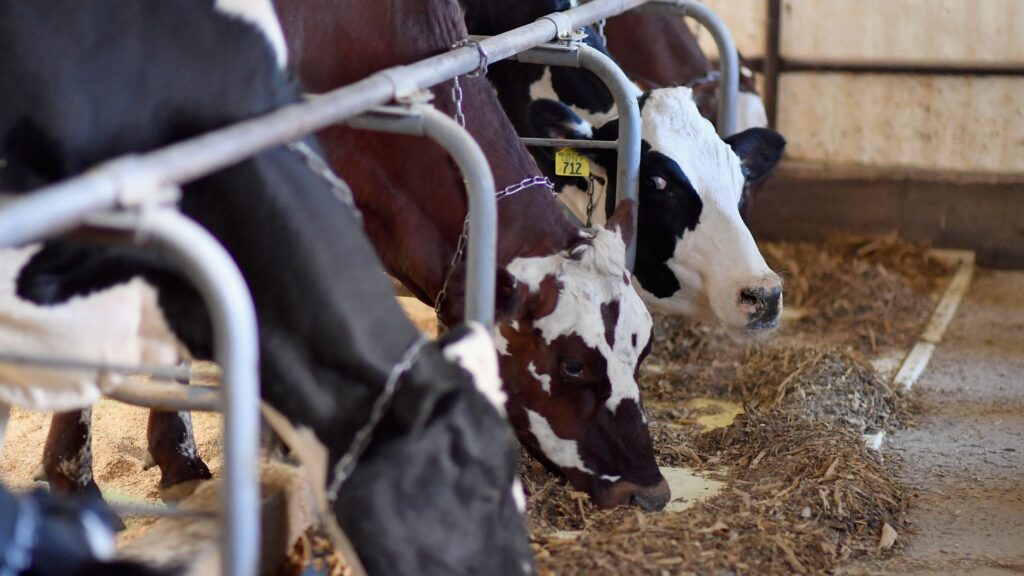The Centers for Disease Control and Prevention asked local and state health officials Tuesday to maintain flu surveillance operations at peak-season levels over the summer in a bid to remain watchful for any signs of human-to-human spread of the H5N1 bird flu virus.
Flu surveillance activity is generally conducted at low levels during the late spring and summer months, in recognition of the fact that as temperatures rise, transmission of seasonal flu viruses drops to minimal levels in the Northern Hemisphere.
advertisement
But in a call with state and local health authorities, Nirav Shah, CDC’s principal deputy director, said flu surveillance efforts should not be allowed to go into off-season mode this summer, given the need to detect human infections with H5N1, if they are occurring.
“The bottom line is that in light of the ongoing outbreak of H5 among domestic dairy cattle, we want to maximize our chances of spotting a case of novel influenza in the community and minimize the risk that a case of H5N1 would go undetected in the community,” Shah told STAT in an interview after his call with leaders of the Association of State and Territorial Health Officials, the Association of Public Health Laboratories, the Big Cities Health Coalition, the Council of State and Territorial Epidemiologists, and the National Association of County and City Health Officials.
Shah asked jurisdictions to increase the number of positive influenza virus samples that they submit to public health laboratories for subtyping, a form of testing that detects the precise type of influenza virus a positive specimen contains.
advertisement
“We say we don’t believe that there are cases of H5 novel influenza circulating because we haven’t seen any evidence that would be suggestive of that. But until and unless we enhance our subtyping, we are basing that conclusion on negative implication rather than on affirmative data,” Shah said in the interview.
He estimated that over the summer, roughly about 600 to 700 positive samples a week that could be subtyped will be collected nationally. In the meeting with the representatives of the state and local health agencies and the testing labs, none raised concerns about having to do the extra work, Shah said.
The outbreak, the first time H5N1 has been seen to transmit in dairy cattle, has been detected in 51 herds in nine states over the past two months. Scientists studying the phenomenon believe the virus is much more widespread. But reluctance on the part of farmers to cooperate with investigations has stymied efforts to gauge how far the virus has spread and how many people may have been infected.
To date only one human infection has been detected, in a man who worked on a Texas dairy farm. The man developed conjunctivitis, the only discernible sign that he had been infected.
H5N1 is a virus that originated in wild ducks. But over the last 27 years, it has spread widely across the globe, killing hundreds of millions of poultry and a variety of mammalian species, including seals, bears, raccoons, and cats, both large and domestic. Until now, it has not been seen in cows.
While it is not killing cattle, the virus’ presence in a species with which people have regular contact is concerning, because it gives the virus more opportunities to evolve to be better at mammal-to-mammal spread, potentially even human-to-human spread. If it acquires that capacity, it could trigger a pandemic.
In addition to maintaining flu surveillance systems throughout the summer, the CDC and others are using detection of influenza A viruses in wastewater to try to look for places where the H5N1 virus might be spreading. H5N1 is an influenza A virus; so too are the H3N2 and H1N1 viruses that circulate during flu season. But because the latter two typically circulate at very low levels during the summer, it’s thought that detecting flu A in wastewater could signal presence of H5N1 in a community — whether that’s in wild birds, cows, milk disposed of by an affected farm, or people.

